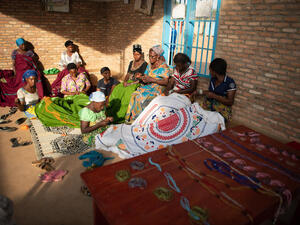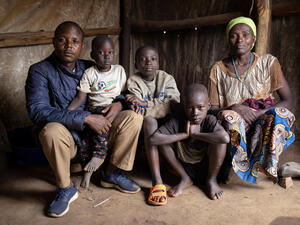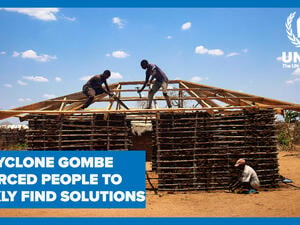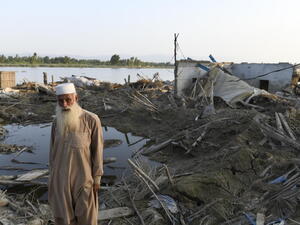Yemen conflict leaves 2.4 million forcibly displaced, situation likely to worsen
Yemen conflict leaves 2.4 million forcibly displaced, situation likely to worsen
After almost one year of conflict in Yemen, more than 2.4 million people are forcibly displaced by the fighting, some of them in hard-to-reach areas. And the situation is likely to get worse, amid increasingly dire humanitarian and socio-economic conditions and with no political settlement in sight.
The figure of 2,430,178 internally displaced people in Yemen appears in the latest report of a special Task Force on Population Movement, which is led jointly by UNHCR and the IOM as part of the humanitarian response to the Yemen crisis, which escalated in late March 2015.
Although down slightly from the 2.5 million displaced people reported by the last task force report, in December (due to improved methodology and returnees identified in the south), the number of people displaced within Yemen remains staggeringly high and a cause for grave alarm. The figures also mask the human face of the conflict and the continuing suffering and growing needs.
UNHCR and IOM believe it is crucial to keep humanitarian access open for deliveries of essential services. At the very least we implore all sides to allow humanitarian access to the hardest hit-areas, where most of the displaced are located. This is feasible, as demonstrated last month, when aid was delivered to Taizz.
The latest report shows increased levels of displacement in areas where the conflict has escalated, notably in the governorates of Taizz, Hajjah, Sana'a, Amran, and Sa'ada, which together account for 68 per cent of all IDPs in Yemen.
Taizz, where parts of Taizz city have been under siege for several months, has the largest number of internally displaced (555,048 individuals, or 23 per cent), followed by Hajjah (353,219), Sana'a (253,962), Amran (245,689) and Sa'ada (237,978). In addition, Sa'ada, Sana'a and Amran have the highest displaced people-to-host-community ratios; 33 per cent, 21 per cent and 20 per cent, respectively.
The latest report, based on data through January 31, highlights the continuing human suffering of those forced to flee their homes in a desperate search for safety, often without possessions and often finding themselves in areas where even the most basic services have been affected by the conflict.
Most seek shelter with relatives and friends, in schools, public or abandoned buildings, makeshift shelters - or out in the open, with little or no protection. Despite the severely restricted humanitarian access and security constraints, organizations such as UNHCR and IOM have delivered household items and emergency shelter to more than 740,000 internally displaced people.
The Yemen Humanitarian Response Plan, launched in Geneva last month, seeks US$1.8 billion for more than 100 humanitarian partners to provide critical and life-saving assistance to 13.6 million people in need. It is currently just 2 per cent funded.
The report is available at:
For further information, please contact:
- UNHCR Yemen, Teddy Leposky, +962 798 660 268 (Amman), [email protected]
- UNHCR Yemen, Jun Shirato, +967 712 225 033 (Yemen), [email protected]
- UNHCR in Geneva, Leo Dobbs, +962 798 660 268, [email protected]
- IOM in the field, Duncan Sullivan, [email protected]
- IOM in Geneva, Leonard Doyle, +41 79 285 7123, [email protected]
- IOM in Geneva, Joel Millman, +41 79 103 87 20, [email protected]








